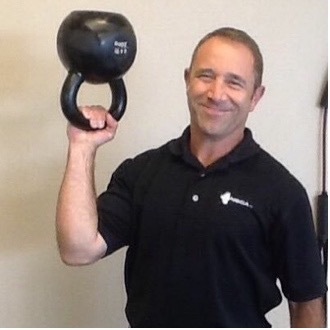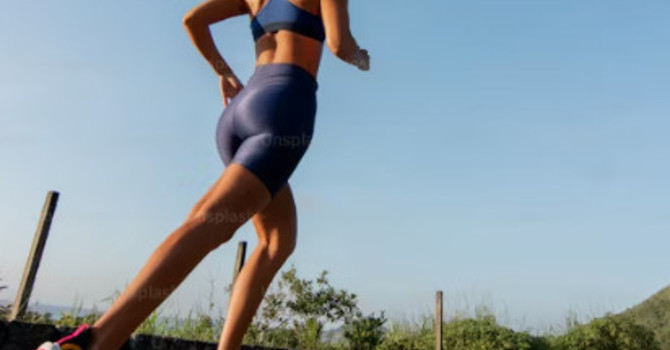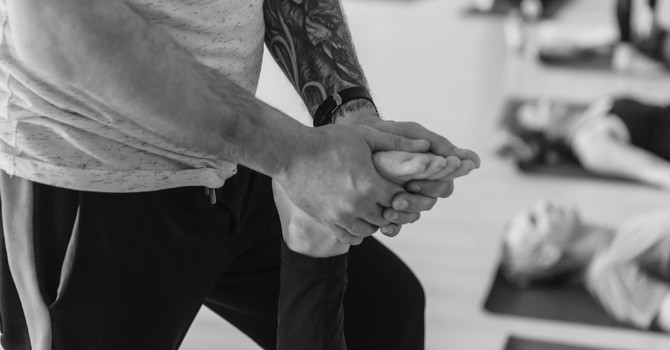
Today’s guest post comes from Seattle-based physical therapist, Dan Swinscoe. Enjoy! -EC
Kettlebells have come a long way since they were used as weights on scales in the open air markets of eastern Europe about two hundred years ago. For exercise purposes, they’ve been called everything from an ancient Russian tool against weakness to a cannonball with a handle. One thing is for sure, though: since Pavel Tsatsouline introduced them to the US about 20 years ago, they have become staples in most gyms and rehab centers, including my own.
Physical therapist Gray Cook once said, “Dumbbells will make you strong, but kettlebells will make you efficient.” It’s the shape that makes them great. Because of the offset handle, when gravity acts upon the bell, you are forced to control it in two planes of motion, not just one (as with a barbell or dumbbell). It’s for this reason that they are one of my favorite tools to rehabilitate and train baseball players.
Which exercises will be the best for you depends on your individual needs – which are determined by a good assessment. However, my list below should have you pretty well covered – even if many good exercises didn’t make the list. In particular, I’m leaving out the single arm and double arm swing on purpose because they are so well known. I think they are awesome and I recommend them, but with this article I am hoping to bring some lesser known but invaluable kettlebell exercises to light. The KB snatch is also a great and popular exercise, but I don’t teach it to my pitchers.
Based on research from OnBase University, no matter how they throw or what pitch they’re throwing, pitchers have to do five things well to be successful. They need to 1) control their upright posture, 2) stride 85% of their height, 3) interact with the ground, 4) control their core, and 5) control their arm. Not every pitch is perfect and no pitcher is perfect, but the more we improve those five things, the better the performance and the more protected they are against injury.
Because injuries to pitchers are more common than to position players, I am biasing my list to what pitchers need most. Here are my top five kettlebell exercises to help the pitcher.
1. Pivot Lunge/Pivot Clean.
This is a great drill for training leg strength and control over momentum (as needed for pitching). We speak in terms of the lead leg, but we have athletes go both directions. Master the skill with the pivot lunge before progressing to the pivot clean. Once the athlete knows how to do both, we usually program it so that they combine them in one set. As an example, for a set of 10, the first five reps are pivot lunges and the next five reps are pivot cleans – and then switch sides. This is a unique advantage to the kettlebell. Lunges are okay with a dumbbell, but once you begin cleaning, the KB is distinctly better.
Trains: stride, upright posture, ground interaction, core control, arm control):
2. Turkish Get-up with Screwdriver
This exercise has a lot going on. To help simplify things, we first teach them separately. When we isolate the screwdriver, we teach it first supine (face up), then progress to side-lying, and then into the side plank position. Each version is slightly more challenging than the previous one because each version adds another body segment to have to control. The TGU and the screwdriver each have value on their own. We will combine them once the fundamentals are mastered and the athlete has demonstrated the ability to handle the complexity of this challenge. More than anything else, this exercise trains the player to improve rotator cuff control of the ball on the socket. However, it also demands scapular control and challenges the cross body patterning connecting that shoulder to the opposite hip via the core. Oblique abdominals and serratus anterior are huge with this drill. Once the movement is mastered, the load can be progressively increased so strength can be gained.
Trains: upright posture, stride, interaction with ground, core control, arm control)
3. Offset Kettlebell Front Squat
With this exercise, we get a nice challenge to scapular stability on the side holding the kettlebell, especially as the bell gets heavy. However, the real benefit of this squat version is how we also get contralateral stability challenges in the frontal plane for both the core and hips (in addition to the usual sagittal plane challenges with other squats). I especially like this style of squat because the challenge is very high with weight that seems small compared to barbell squat variations. This way, I get high muscle stress with low joint stress. For this reason, it’s my #1 squat choice for players when training in season.
Trains: upright posture, interaction with ground, core control, arm control
4. Dynamic Rows
This exercise has the athlete in a hinge position, which challenges the posterior chain. However, while maintaining that hinge, rotation of the torso is accelerated and decelerated bilaterally. The dynamic nature is an additional challenge from standard rowing exercises. It also forces the rotator cuff and scapula stabilizers to work and work quickly.
Trains: upright posture, core control, arm control
5. Open Half-Kneeling Hip Mobility
Improving stride length is something a lot of pitchers need to do. Improving this mobility so that it sticks can sometimes be a challenge. I think the reason this drill works so well is because of the load of the kettlebell. The weight of the bell assist the player into “depth,” and because he’s doing this actively, the weight seems to give the nervous system more to feel. The gains seem to stick. Players also seem to universally like how it feels to them. Any exercise that is liked gets done more often. This one feels good.
Trains: upright posture, stride
I hope you find these kettlebell exercises useful. If this is your first exposure to kettlebell training I would recommend you seek professional coaching when you are able. Keep in mind some of these exercises take time to master. But like other investments they are worth the payout in the end.
A special thanks to Cardinals pitcher Ian Oxnevad (@ioxnevad) and University of Washington commit Cole Fontenelle (@cole.fontanelle) for their modeling services.




